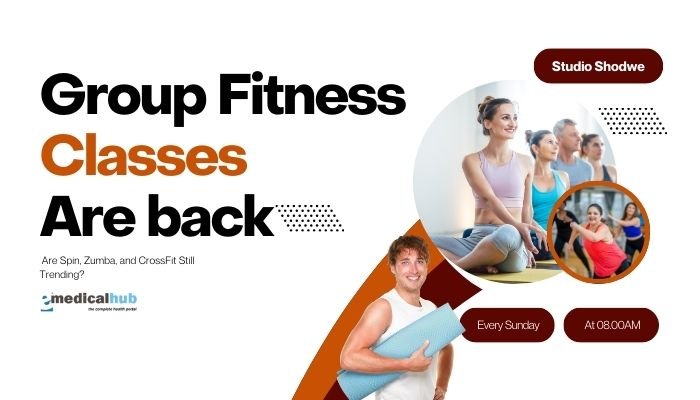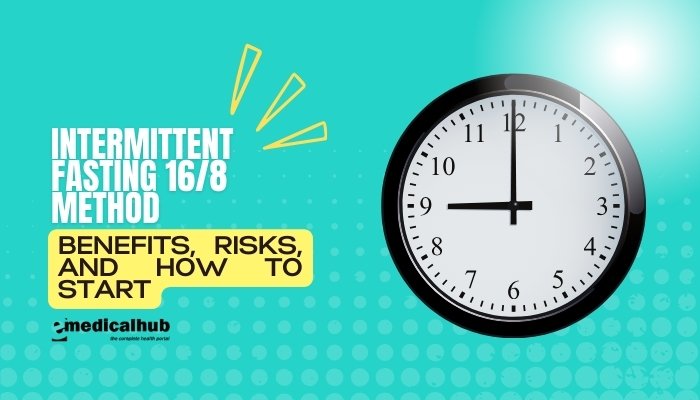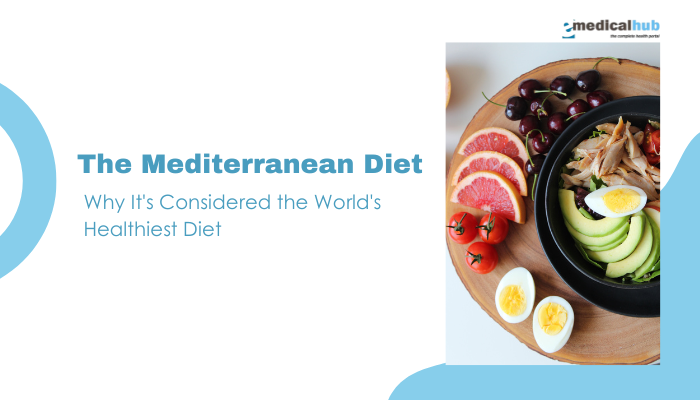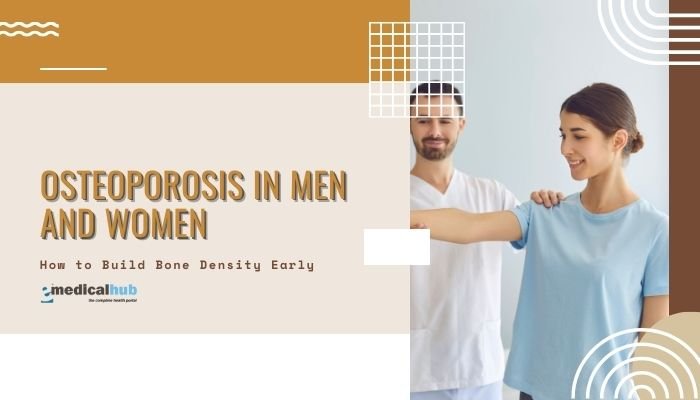Introduction
After a period of altered fitness habits—triggered by gym shutdowns and social distancing—many people are rediscovering the energy and motivation offered by group fitness classes. From the high-intensity camaraderie of CrossFit to the lively, dance-based fun of Zumba, these workouts provide more than just exercise: they build social ties, accountability, and a sense of shared endeavor.
As fitness enthusiasts return to studios, community centers, and boutique gyms, a key question arises: are classic group classes like Spin, Zumba, and CrossFit still booming in popularity, or have shifting trends ushered in different favorites?
In this article, we’ll explore why group fitness remains relevant, how it’s evolved post-pandemic, and the status of three iconic classes: Spin (indoor cycling), Zumba, and CrossFit. We’ll also discuss the hybrid approaches (virtual plus in-person) that have expanded the reach of group fitness, allowing participants to enjoy classes at home or in-person.
By surveying the unique value each program provides, we can better understand whether these classes are still top-tier trends and how they might fit into diverse exercise preferences.
Group Fitness in the Post-Pandemic Landscape
The Appeal of Group Workouts
- Community and Motivation: Exercising alongside others often increases adherence and enjoyment. There’s a contagious energy when the entire class sweats and pushes forward as one.
- Structured Training: Classes follow a set program, taking the guesswork out of planning. Instructors guide participants through warm-ups, main sets, and cooldowns, ensuring balanced workouts.
- Varied Difficulty: Typically, instructors offer modifications for beginners and advanced participants alike, making classes accessible to broader skill levels.
Hybrid Fitness—Combining Online and Offline
- Digital Growth: During the pandemic, many studios pivoted to live-stream or on-demand classes. Some participants continue using these services for convenience or travel.
- Return to In-Person: With fewer restrictions in many regions, real-time group classes have reemerged, appealing to those who missed the in-person synergy.
- Flexible Memberships: Many gyms now provide a mix—online subscriptions plus on-site sessions—to reach a bigger audience.
The Social Connection Effect
- Mental Health: Group classes can reduce loneliness, stress, and depression by reinforcing social bonds.
- Accountability: People more likely show up for classes knowing they have a spot reserved or friends expecting them.
Spin (Indoor Cycling): Still Pedaling Strong?
A Snapshot of Spin
- Basics: Indoor cycling classes revolve around stationary bikes with adjustable resistance. Typically guided by an instructor, participants cycle through intervals, climbs, and sprints.
- Music-Driven: Upbeat or thematic playlists help set pace, energy, and transitions. Some instructors choreograph “dancing on the bike,” adding upper-body moves for extra engagement.
Continued Popularity
- Why It Works:
- Low-Impact: Minimizes stress on knees or ankles while providing intense cardio.
- Scalable Intensity: Riders can dial resistance to personal levels, ensuring novices and hardcore cyclists can coexist in the same class.
- High Calorie Burn: A typical 45-minute spin session can burn hundreds of calories, attracting weight-loss seekers.
- Tech Innovations: Many studios incorporate performance metrics—watt output, heart rate, RPM—projected on screens for real-time feedback and friendly competition.
The Competition: Peloton and Beyond
- At-Home Cycling: Peloton’s success soared during lockdowns, offering interactive classes. Some spin devotees discovered they prefer at-home convenience.
- Studio Edge: Yet many still crave the group vibe, big screens, and collective energy found in spin studios. Post-pandemic, spin classes remain robust in many gyms, bolstered by new digital tie-ins for those who occasionally skip in-person sessions.
Future Outlook
- Signature Experiences: Studios differ by adopting immersive lighting or unique add-ons (light weights, yoga-cycling hybrids) for fresh experiences.
- Demographics: Spin appeals to a broad age range—young professionals to older adults who want intense but joint-friendly workouts.
Zumba: Dancing Towards a Healthy Revival
The Zumba Phenomenon
- Origins: Created by Beto Pérez in the 1990s, Zumba merges Latin-inspired dance with aerobic moves. Classes feature salsas, reggaetón, merengue, and hip-hop beats.
- Accessible Fun: Encouraging participants to let loose, Zumba fosters a party-like atmosphere that many find less intimidating than standard aerobics.
Why It Remains Appealing
- Non-Intimidating Approach: Zumba is less about perfect form, more about energy and enjoyment. Even novices can follow simpler dance steps.
- Cardio and Coordination: Dancing improves cardiovascular health, helps burn calories, and challenges motor skills. Over time, participants build better balance and body awareness.
- Community Vibe: High-fives, laughter, and group synergy define Zumba classes, forging a supportive environment.
Evolving Routines and Fusions
- Variants: Zumba Toning, Aqua Zumba, Zumba Kids, and more. The brand has expanded to cater to different populations and intensities.
- Online Classes: Like other group workouts, Zumba also pivoted to Zoom or video-based instruction. Some instructors maintain hybrid classes, bridging geographical barriers.
Growth Potential
- Diversifying Audiences: Historically popular with women; men’s interest is growing as the taboo around dance-based fitness fades.
- Rebound from Gym Closures: As people return to gyms, the joy of dancing in a group setting fosters high re-engagement rates.
CrossFit: Functional Fitness and Community
What Defines CrossFit?
- Philosophy: CrossFit emphasizes varied functional movements at relatively high intensity, incorporating elements from weightlifting, gymnastics, and cardio.
- WOD (Workout of the Day): Typically short, intense workouts, with unique names or themes, posted daily.
- Box Culture: CrossFit spaces are called “boxes,” promoting tight-knit communities, shared challenges, and progression logs.
Ongoing Popularity and Criticism
- Why People Love It:
- Community Bond: Camaraderie fosters accountability; people cheer each other on.
- Measurable Results: Emphasis on time, reps, or load encourages seeing tangible improvements.
- Functional Movements: Movements are practical for daily life, building all-around fitness.
- Concerns: Risk of injury if performed incorrectly, especially with advanced lifts under time pressure. CrossFit affiliates vary in coach quality and emphasis on technique.
Adaptations Post-Pandemic
- Outdoor WODs: Many boxes integrated outdoor setups or scaled program, ensuring safety. Some shifted to limited class sizes, requiring sign-ups.
- Online Coaching: Home-based CrossFit or minimal equipment versions keep members engaged.
- Trends: Despite potential controversies, CrossFit membership remains strong, though some participants try hybrid approaches blending CrossFit with other group classes.
Future of CrossFit
- Community Driven: If affiliates maintain safe coaching standards, CrossFit’s sense of belonging likely keeps it afloat.
- Specialization: Some boxes integrate sports-specific training or different competition categories for novices, teens, or older adults, broadening membership.
Factors Driving Group Fitness Revival
Pent-Up Demand for Social Interaction
- Post-Isolation: People crave face-to-face connection, group synergy. Fitness classes fill that social gap while providing health benefits.
- Tribal Psychology: Humans are social. Achieving a common sweat-soaked goal fosters belonging.
Tech and Engagement
- Wearables and Apps: Many classes incorporate heart rate monitors, leaderboards, or real-time metrics. This gamification promotes accountability and competition.
- Integration with Streaming: Some in-person studios now record or live-stream classes, bridging offline and online audiences.
Holistic Wellness Trends
- Mind-Body Connection: Many group classes incorporate breathwork, dynamic warm-ups, or mindfulness cues, aligning with the broader wellness movement.
- All-Levels Inclusivity: Modern classes emphasize modifications to cater to novices, older adults, or those with special conditions, drawing a bigger demographic.
Safety Measures and Considerations
Avoiding Overtraining
- Gradual Progression: Jumping from inactivity to advanced CrossFit or intense spin sessions can cause injuries or burnout. Slow increases in frequency or load are prudent.
- Recovery: Adequate rest days, hydration, and nutrition are essential, particularly after demanding classes.
Instructor Qualifications
- Certification: Checking if instructors are certified (e.g., CrossFit Level 1 or specialized spin certificates) ensures safer programming.
- Class Size: Smaller groups allow for personalized form checks, especially relevant for heavy lifts in CrossFit or complex moves in Zumba.
COVID-19 or Health Protocols
- Ventilation: Freed, post-pandemic classes still benefit from well-ventilated or partially outdoor setups to reduce infection risks.
- Cleaning: Quick wipe-down of shared equipment between uses (e.g., spin bike handles, CrossFit barbells) is recommended.
Choosing the Right Group Fitness Class
Assessing Personal Preferences
- Music and Atmosphere: If you love rhythmic, dance-based approaches, Zumba might be a match. If you relish data metrics, spin can satisfy. If you crave functional strength challenges, CrossFit fits well.
- Energy Level: Some classes are extremely high-energy (CrossFit WODs, advanced spin intervals), while others are more moderate or beginner-friendly.
Setting Goals
- Weight Loss or Cardiovascular Endurance: Spin or Zumba are great for calorie expenditure.
- Strength and Power: CrossFit or other barbell-based classes excel at building functional muscle.
- Coordination and Fun: Zumba stands out for its dance flavor and joyfulness.
Trial Classes
- Sampling: Many gyms let newcomers try a free session. This can help gauge synergy with the group, the instructor’s style, and the workout’s demands.
- Listen to Your Body: If a class feels too intense or causes ongoing soreness or injury, consider a more scaled approach or different method.
Balancing Group Classes with Other Forms of Exercise
Diversifying Workouts
- Prevent Overuse: Doing only spin daily might overwork certain muscle groups while ignoring others. CrossFit is broad but can still lead to repetitive strain if done daily.
- Complementary Activities: Yoga for flexibility and mental relaxation, light running or swimming for variety, or progressive weight training for targeted muscle building.
Periodization and Rest
- Structured Training Cycles: If you love CrossFit, incorporate deload weeks or alternate high-intensity days with lower-intensity ones.
- Recovery: Keep track of sleep, nutrition, and mental stress to avoid plateau or overtraining syndrome.
Cross-Training Benefits
- Injury Prevention: Varying stress on the body fosters well-rounded resilience.
- Sustainability: People are more likely to adhere long-term if they cycle between classes they enjoy, preventing monotony.
The Future of Group Fitness Classes
New Hybrids and Fusion Classes
- Spin-Yoga, Zumba-Pilates: Instructors and gyms experiment with creative combos to attract novices seeking variety.
- Adaptive Classes: Classes designed for seniors, pregnant individuals, or those with injuries, ensuring inclusivity.
Tech Integration
- Virtual Reality (VR): Some studios explore VR-based spin or dance experiences, although this is still niche.
- Wearable Connectivity: More advanced analytics for coaches to see real-time performance, guiding modifications instantly.
Community-First Experiences
- Workplace and Corporate: Companies host onsite group classes for staff well-being, further broadening group fitness acceptance.
- Wellness Retreats: Weekend getaways combining spin, dance, CrossFit style WODs, plus nutrition seminars or spa elements.
Conclusion
Group fitness classes—be they high-octane spin sessions, energizing Zumba parties, or the gritty camaraderie of CrossFit—remain a core pillar of the modern fitness landscape, with many participants welcoming them back with open arms after disruptions in recent years. While real-time, in-person gatherings have re-emerged, the digital dimension persists, offering new ways to engage or bridging in-person sessions with at-home workouts. With each type of class providing distinct benefits—cardio improvements, strength gains, or sheer fun—there’s a place for spin, Zumba, and CrossFit within evolving fitness routines.
For enthusiasts, choosing the right class involves aligning personal goals, comfort with intensity, and preference for music or environment. Despite potential controversies (e.g., CrossFit’s injury risks, or the fad reputation of certain dance classes), safe instruction and personal awareness can mitigate many hazards.
By adopting mindful scheduling, listening to one’s body, and celebrating the community aspect, individuals can find renewed motivation in group workouts—demonstrating that these beloved classes, far from being outdated trends, remain integral ways to stay active, healthy, and socially connected in a time-starved world.
Frequently Asked Questions (FAQ)
- Is Spin appropriate for beginners, or do I need to be already fit?
- Spin is adaptable for nearly all fitness levels. Beginners simply keep resistance lower and pedal at a comfortable pace. Over time, you can build stamina and turn up the intensity.
- Will Zumba help me lose weight?
- Zumba can be an effective cardio workout. Combined with a balanced diet, it can aid weight management. Consistency, plus other healthy habits, ultimately matters.
- Is CrossFit only for hardcore athletes?
- Not necessarily. Although CrossFit has a reputation for intensity, reputable “boxes” scale movements for novices or older adults, focusing on proper technique.
- I worry about catching colds or viruses in group classes. Any tips?
- Most gyms have increased cleaning protocols. Practice standard hygiene: wipe down equipment, bring your own mat, and consider wearing a mask if local conditions call for it.
- Which is best for toning—spin, Zumba, or CrossFit?
- All can support toning but in different ways. Spin helps lower-body muscles and cardio. Zumba fosters overall movement and mild muscle engagement. CrossFit integrates strength training, effective for broader muscle definition. Combining them can yield balanced results.
- Should I do group classes daily, or is that too much?
- It depends on your recovery and workout variety. Some may do daily classes with low-impact or moderate-intensity days. Others need rest or complementary sessions. Listen to your body and alternate intensities.
- Are online group classes as effective as in-person?
- They can maintain motivation and some sense of community if live-streamed, but in-person classes provide closer instructor feedback and real-time camaraderie. Many find a hybrid approach beneficial.
References
- IHRSA. 2021 Global fitness industry overview. 2022.
- American Council on Exercise (ACE). Group fitness trends in the post-pandemic world. 2021.
- Thompson WR. Worldwide survey of fitness trends for 2023. ACSM Health Fitness J. 2023;27(1):9-18.
- Chekroud SR, et al. Association between physical exercise and mental health in 1.2 million individuals. Lancet Psychiatry. 2018;5(9):739-746.
- Kravitz L. Physiological changes in spin classes. IDEA Fitness J. 2019;14(3):46-53.
- Wen D, et al. Effects of Zumba on health-related fitness in healthy adults. Prev Med. 2019;121:27-35.
- Klimek M, et al. Are injuries more common with CrossFit training? Sports Med. 2018;48(12):2879-2892.
- Pawlowski CS, et al. Physical activity and communal synergy: A scoping review of group fitness. BMC Public Health. 2020;20(1):459.
- Garber CE, et al. American College of Sports Medicine position stand on the quantity and quality of exercise for health. Med Sci Sports Exerc. 2011;43(7):1334-1359.
- Mears R, Hansen L. The psychological benefits of group fitness. J Sport Health Sci. 2016;5(3):348-354.
- Bauman AE, et al. Correlates of physical activity: why are some people physically active and others not? Lancet. 2012;380(9838):258-271.
- Bherer L, Erickson KI, Liu-Ambrose T. A review of the effects of physical activity on cognition. Psychon Bull Rev. 2013;20(4):511-519.
- Zuniga K, et al. Economic and social benefits of group exercise. J Public Health. 2020;42(2):e113-e120.
- CrossFit Official. CrossFit’s global presence in data. 2022.





